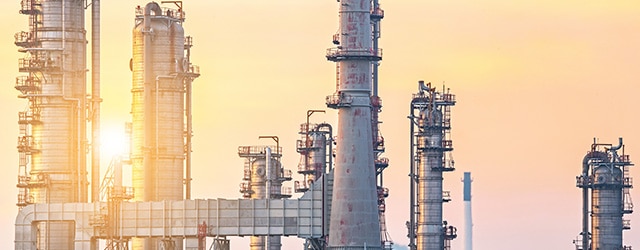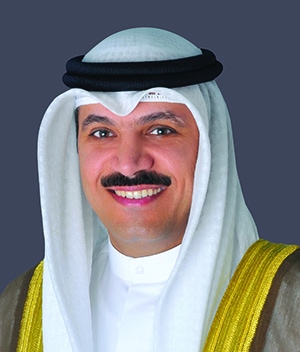A rise in oil prices has eased the immediate financial stress of Gulf nations, but the need for diversification remains pressing.

With crude oil prices at their highest in three years, governments in the Gulf have a little breathing room to stimulate their slowing economies. And most are indeed boosting spending and retreating from austerity.
In the United Arab Emirates, for example, GDP growth slowed to just 0.5% last year. Crown Prince Mohammed bin Zayed Al Nahyan announced in a recent series of tweets that Abu Dhabi plans to spend $13.6 billion over three years to boost the economy and create jobs. In Kuwait, the parliament agreed to postpone the implementation of a new value-added tax from 2018 until 2021 at the earliest. Saudi Arabia appears to have loosened its fiscal stance, as a rise in spending in the first quarter of 2018 more than offset an increase in nonoil revenues.
“After several years of harsh austerity, governments in the Gulf are more likely to use the [hydrocarbon] windfall to boost spending and support economic growth, rather than stash it away in their sovereign wealth funds,” says Jason Tuvey, Middle East economist at Capital Economics.
However, economic reform to diversify the economy remains a priority, as oil prices are expected to fall back again in the next few years. “The primary challenges for the government going forward are to sustain the implementation of the bold structural changes that are underway, meet the medium-term fiscal targets it has set, and resist the temptation to re-expand government spending in line with higher oil prices,” said IMF team leader Tim Callen, after a visit to Saudi Arabia in May.
Mazin Saad Al-Nahedh, group CEO of Kuwait Finance House, says experience has shown that an increase in oil prices often comes with a decline in economic reforms. “We don’t wish for this to happen again,” Al-Nahedh says. “There are reforms that must be adopted to encourage growth in the private sector, continue government spending on infrastructure projects and establish a more dynamic and competitive economy.”

Al-Hashel, Central Bank of Kuwait: We aim to strike a balance between healthy private-sector credit growth and preserving the attractiveness of the dinar. |
Tuvey points to increased government spending as a key cause of deterioration in Saudi Arabia’s finances in the first quarter. Spending rose by 18.8% year over year, due to public-sector bonuses announced in January and a new household allowance, known as the Citizen’s Account. Low- and middle-income families receive monthly payments under this program to compensate them for higher fuel and electricity prices and a value-added tax.
The rally in oil prices means that the Saudi budget deficit is still likely to narrow this year, Tuvey says, but it won’t be enough to close the gap. For Kuwait and Qatar, current oil prices are more than enough to cover spending; but Saudi Arabia, Bahrain, the UAE and Oman need prices to rise even further to balance their budgets. Their so-called “break-even” price ranges from just over $45 per barrel in Kuwait to about $100 per barrel in Bahrain, as measured by Brent crude, the global benchmark.
Of course, one is glad to do more than just break even. “[Higher oil revenue] will enhance the growth in oil GDP, which was negative last year, in part due to production cuts on account of the OPEC-plus agreement,” Mohammad Al-Hashel, governor of the Central Bank of Kuwait, tells Global Finance. “As a result, overall GDP is likely to register stronger growth. Moreover, higher oil revenue will further increase the government’s capacity to spend.”
While Al-Hashel says Kuwait’s banking sector is already very stable, with robust capital and liquidity, the new oil revenue will increase that stability and support growth. “Additionally, credit off-take will increase amid growing consumer confidence, an improving investment climate and greater government spending,” he adds.
Kuwait’s central bank raised its discount rate by a quarter point in March, to 3%. “Though our domestic inflation was quite low, the narrowing gap between our policy rate and that of the Federal Reserve was a key consideration, with an aim to maintain the attractiveness of the Kuwaiti dinar,” Al-Hashel says. “Going forward, we will be closely monitoring developments both in the financial sector and in the overall economy,” he adds. “Ultimately, we aim to strike a balance between healthy private-sector credit growth on the one hand, and preserving the attractiveness of the dinar on the other.”
In Qatar, Ali Ahmed Al-Kuwari, group CEO of Qatar National Bank, says: “We expect oil prices to average $69 a barrel in 2018. This will not necessarily result in an easing of the fiscal position, but rather in transfers within public-sector accounts. For example, some of the surplus may be transferred to the sovereign wealth fund, or used to bolster reserves at other government institutions.”

Al-Kuwari, Qatar National Bank: Some of the surplus may be deployed for other public uses—the sovereign wealth fund, or reserves or debt reduction. |
Al-Kuwari says higher oil prices will also likely lead to higher government revenue and higher incomes. As a result, the private and public sectors are likely to deposit more money into the banking system, easing liquidity constraints and allowing banks to increase lending, Al-Kuwari says.
“The government’s oil-price assumption for the 2018 budget is well below our average expected oil price,” he says. “This means there is likely to be a budget surplus this year.” Nonetheless, government spending is unlikely to increase materially, Al-Kuwari says, because the government has a number of other priorities.
In neighboring Bahrain, where hydrocarbons account for about 75% of government revenue, the 2018 budget is based on an oil price of $55 a barrel. “Recent stabilization of the oil price above $70 a barrel will definitely help the government to ease the fiscal budgetary pressure,” says Adel El-Labban, group CEO and managing director of Ahli United Bank. “Coupled with disbursements from the GCC Development Fund, this will enable the Bahrain government to further increase its capital spending.”
El-Labban adds that despite the increase in oil prices, the Bahraini government is likely to maintain the slow pace of fiscal consolidation with gradual steps such as cutting subsidies on fuel and electricity and imposing an excise tax on select products.
In the United Arab Emirates: “The sharper-than-expected recovery in oil prices has provided more room for the government to boost spending,” says Shayne Nelson, group CEO of Emirates NBD. “Indeed, we have seen a raft of recent announcements from both Abu Dhabi and Dubai that should lead to more job creation and help to mitigate the impact of a VAT and higher fuel prices.”
Overall, these measures should support growth in nonoil sectors, Nelson says, but rising oil prices stem in part from OPEC-agreed production cuts, which “has led to lower oil production than we had expected and will weigh on headline GDP growth this year.”
While there has clearly been a shift in most Gulf countries away from the harsh austerity of recent years, fiscal loosening is constrained. “If oil prices fall back to $55 to $60 a barrel over the next couple of years (as we expect), fiscal austerity is likely to come back on the agenda in Saudi Arabia,” says Tuvey. “Against that backdrop, the region’s economic recovery is likely to be slow going.”
| Kuwait | 45.4 |
| Qatar | 51.8 |
| UAE | 80.2 |
| Oman | 89.0 |
| Saudi Arabia | 96.9 |
| Bahrain | 102.1 |
Source: Capital Economics



